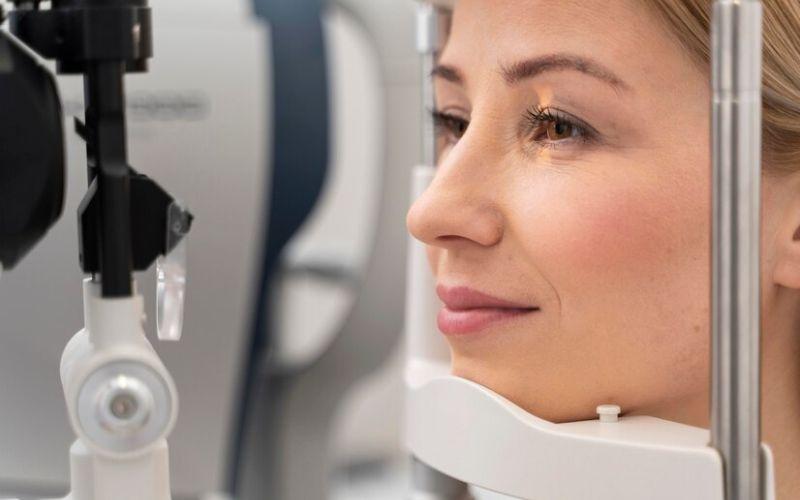If you're tired of wearing glasses or contact lenses, LASIK eye surgery might sound like a life-changing option. But before diving in, it's essential to understand what LASIK is, how it works, and what you can expect from the procedure. In this blog post, we’ll explore how LASIK can improve your eyesight, the benefits and risks, and everything you need to know before considering it.
What is LASIK Eye Surgery?
LASIK (Laser-Assisted In Situ Keratomileusis) is a popular and effective surgical procedure designed to correct common vision problems such as nearsightedness (myopia), farsightedness (hyperopia), and astigmatism. Using a specialized laser, an ophthalmologist reshapes the cornea (the clear front part of your eye) to improve how light is focused on the retina, resulting in clearer vision.
LASIK is a type of laser vision correction, and it has become one of the most frequently performed eye surgeries around the world. Studies show that the success rate of LASIK is incredibly high, with over 95% of patients achieving 20/20 vision or better post-surgery .
How Does LASIK Eye Surgery Work?
The LASIK procedure is quick, often taking only about 10 to 15 minutes per eye. Here’s how it works:
- Creating the Corneal Flap: A small flap is created on the surface of the cornea using either a blade or a laser.
- Reshaping the Cornea: The surgeon folds back the flap and uses a laser to reshape the cornea, allowing light to focus more precisely on the retina.
- Healing: The flap is then replaced, acting as a natural bandage that helps the eye heal quickly.
LASIK is considered minimally invasive, and because of technological advancements, the procedure is highly precise. Most patients experience little to no pain and notice significant improvement in their vision almost immediately after surgery.
Who is a Good Candidate for LASIK?
Not everyone is an ideal candidate for LASIK eye surgery. Here are the key factors that determine candidacy:
- Stable Vision: Your prescription should have been stable for at least a year.
- Age: Candidates are usually over 18 years old, as vision typically stabilizes by this age.
- Good Eye Health: No existing eye conditions like cataracts or glaucoma.
- Healthy Cornea: Your corneas should be thick enough for the surgery to be performed safely.
- Realistic Expectations: While LASIK can significantly reduce or eliminate the need for glasses or contact lenses, results vary based on individual factors.
If you’re unsure whether you qualify for LASIK, a consultation with an ophthalmologist is necessary. They’ll evaluate your eyes and overall health to determine if LASIK is a safe and viable option for you.

What to Expect During and After LASIK Surgery
Understanding what happens before, during, and after LASIK surgery can ease any concerns you may have about the procedure.
Pre-Surgery Preparation
- Your eye doctor will conduct a comprehensive eye exam to ensure your eyes are healthy and you’re a good candidate for the surgery.
- Avoid wearing contact lenses for a few days before the surgery, as they can affect the shape of your cornea.
- On the day of surgery, make sure someone is available to drive you home, as your vision will be temporarily blurry after the procedure.
During the Surgery
- The entire process is relatively quick and painless. You’ll be awake during the surgery, but numbing drops are applied to your eyes to prevent discomfort.
- The actual laser reshaping takes less than a minute per eye.
- You might feel slight pressure during the procedure, but most patients report minimal discomfort.
Post-Surgery Recovery
- Your vision will be blurry immediately after surgery, but you should begin to notice improvements within a few hours.
- Most people return to normal activities within a day or two, though full healing may take a few weeks.
- Follow-up visits with your eye doctor are essential to ensure proper healing.
LASIK Eye Surgery Advantages and Disadvantages
When considering LASIK, it’s important to weigh both the benefits and potential drawbacks.
Advantages:
- Improved Vision: Most patients achieve 20/20 vision or better, reducing or eliminating the need for glasses or contact lenses.
- Quick Recovery: LASIK is known for its fast recovery time, with most patients returning to their regular activities within a day or two.
- Long-Lasting Results: For many, the results of LASIK are permanent, though some may require enhancement surgeries years later.
- High Satisfaction Rate: According to the American Refractive Surgery Council, 96% of patients are satisfied with the results of LASIK .
Disadvantages:
- Temporary Side Effects: Some patients experience dry eyes, glare, halos around lights, or sensitivity to light, particularly at night.
- Not Suitable for Everyone: LASIK may not be an option for people with thin corneas, unstable prescriptions, or certain eye diseases.
- Possible Complications: Although rare, complications such as infection, inflammation, or flap issues can occur.
- Vision Changes: In some cases, LASIK may not completely correct vision, especially in individuals with high prescriptions. Additionally, natural age-related vision changes may still occur.
While the risks are minimal, they do exist. Discussing them with your surgeon is crucial to making an informed decision.
Benefits of LASIK Eye Surgery
The long-term benefits of LASIK eye surgery can be life-changing:
- Increased Convenience: Imagine waking up and seeing clearly without the need for glasses or contacts.
- Cost-Effective: Though LASIK is a significant upfront investment, it can save money in the long run by reducing or eliminating the need for prescription eyewear.
- Confidence Boost: Many patients report feeling more confident in everyday activities without the hassle of glasses or contacts.
With a success rate of over 90%, most LASIK patients enjoy clear vision for years after the procedure.
Potential Risks and Side Effects
While LASIK is a highly safe and effective procedure, it’s essential to be aware of the potential risks and side effects:
- Dry Eyes: One of the most common side effects, dry eyes usually subside within a few weeks or months.
- Halos or Glare: Some patients experience visual disturbances like halos or glare around lights, especially at night.
- Over/Under Correction: In rare cases, the laser may remove too little or too much corneal tissue, requiring an additional enhancement procedure.
Choosing a skilled and experienced surgeon can significantly minimize these risks.

LASIK vs. Other Laser Vision Correction Methods
There are other laser vision correction methods besides LASIK, such as PRK (Photorefractive Keratectomy) and SMILE (Small Incision Lenticule Extraction). Here's a brief comparison:
- PRK: Involves reshaping the cornea without creating a flap, making it ideal for those with thinner corneas. However, recovery time is longer than LASIK.
- SMILE: A newer procedure that uses a smaller incision, resulting in faster healing and less discomfort than LASIK. However, it may not be suitable for all types of vision correction.
Each option has its pros and cons, and your doctor can help determine which is best suited to your needs.
Conclusion
LASIK eye surgery can dramatically improve your vision and quality of life, offering freedom from glasses and contact lenses. However, it’s essential to weigh the benefits and risks and consult with an experienced surgeon to determine if LASIK is right for you.
If you're considering LASIK, reach out to the experts at Healzone to schedule a consultation and explore your options for clearer, sharper vision. With proper guidance, LASIK could be the right step toward improving your eyesight for the long term.
 Translate
Translate
 English
English  العربية
العربية  Русский
Русский  বাংলা
বাংলা 

